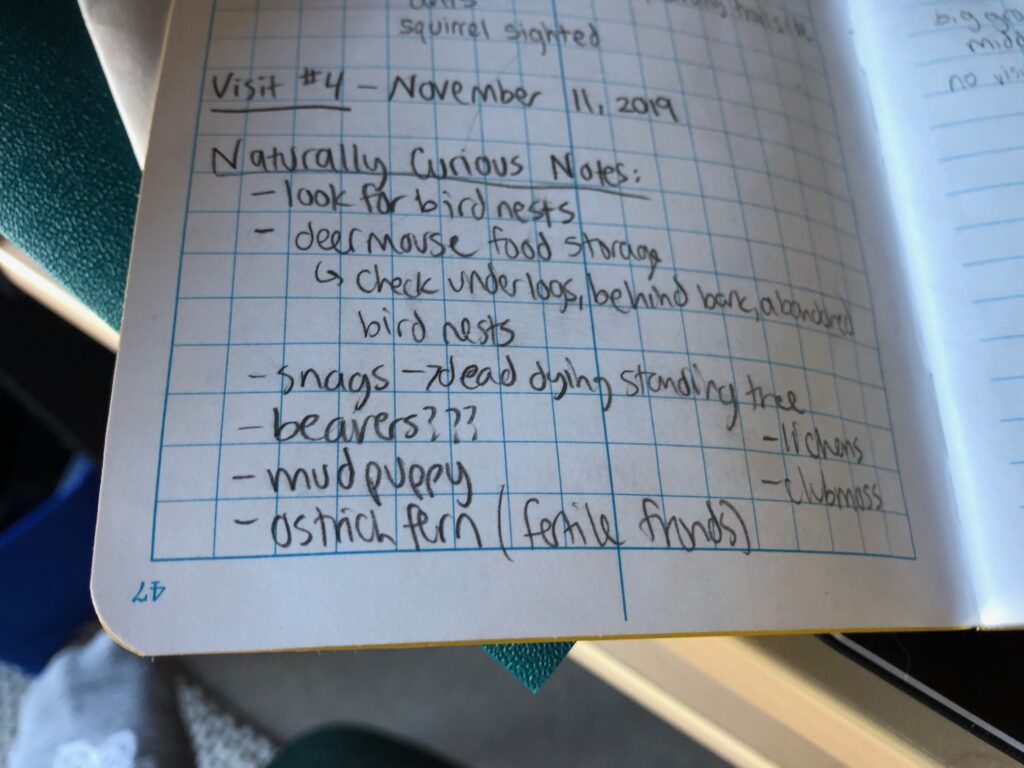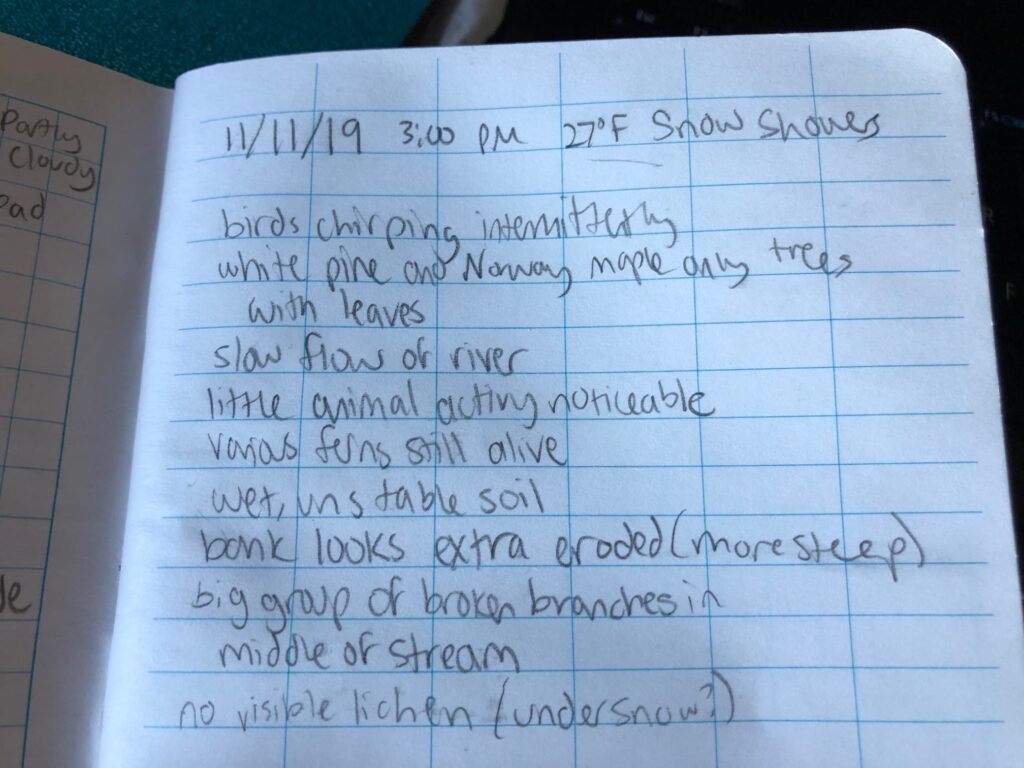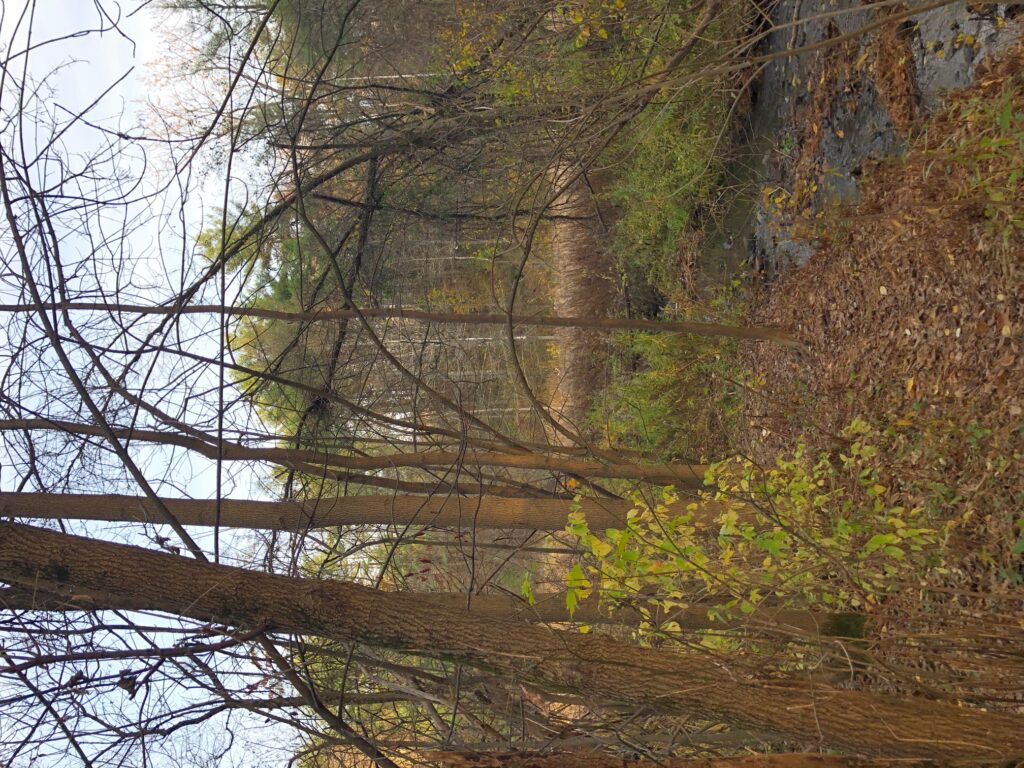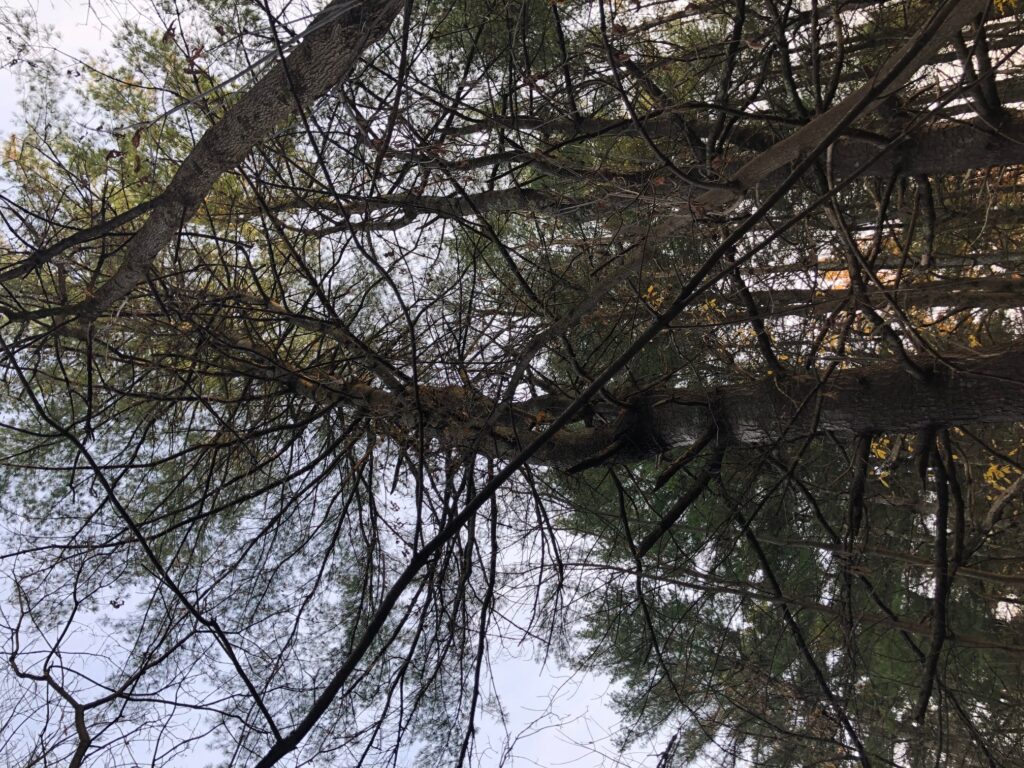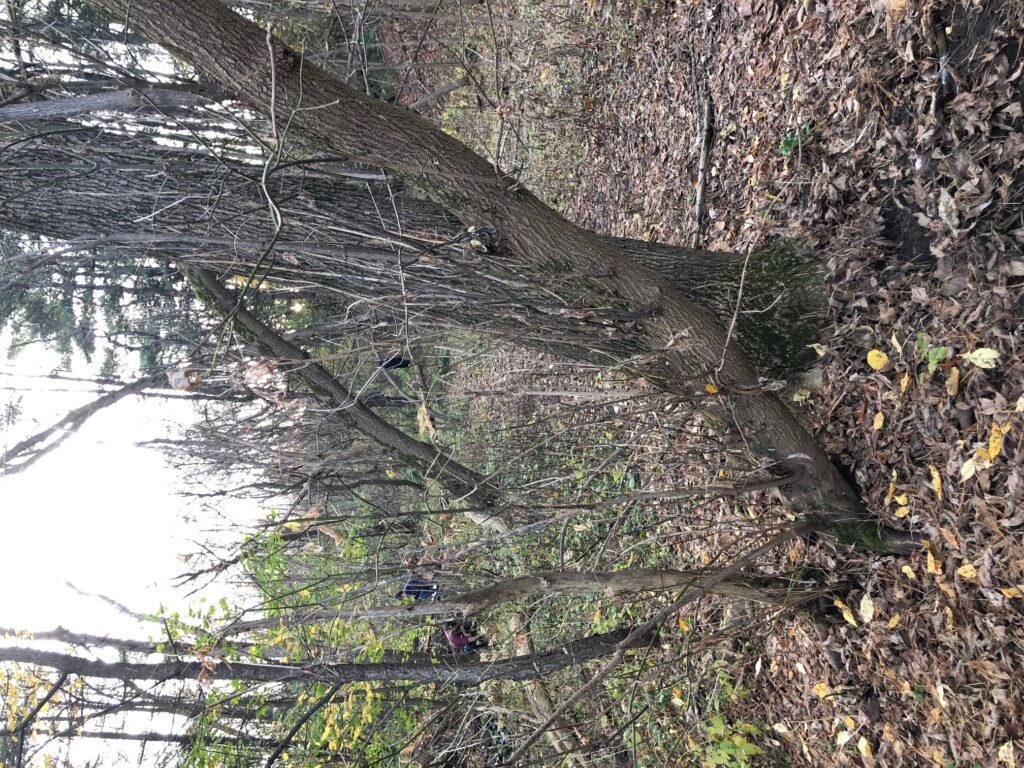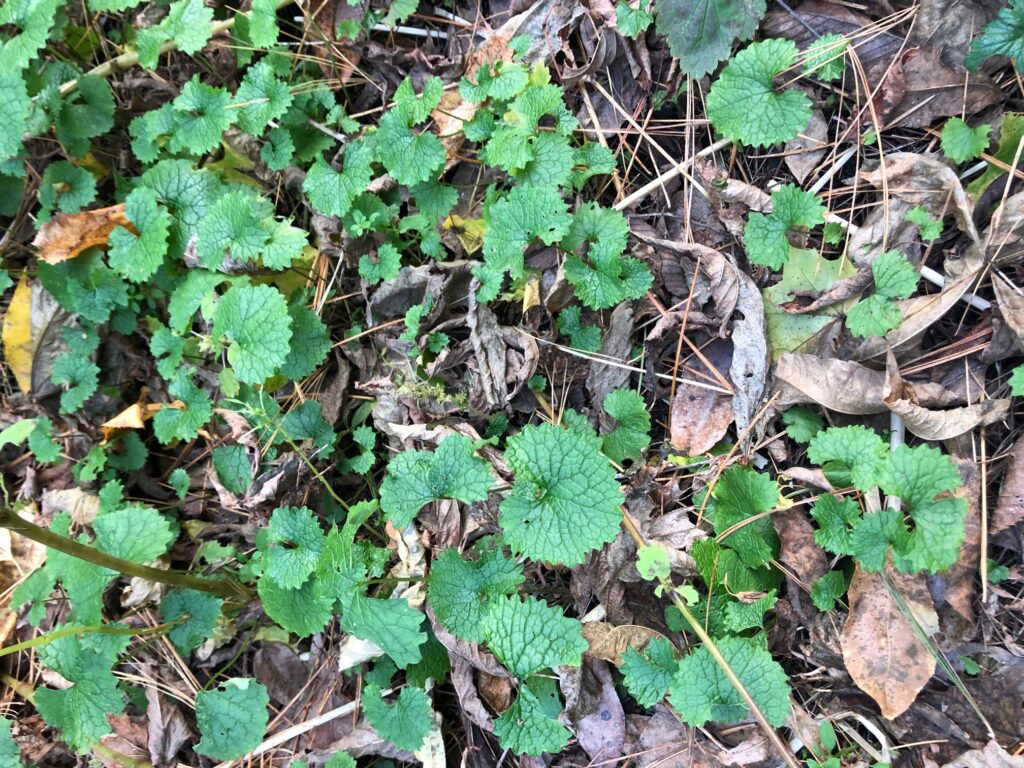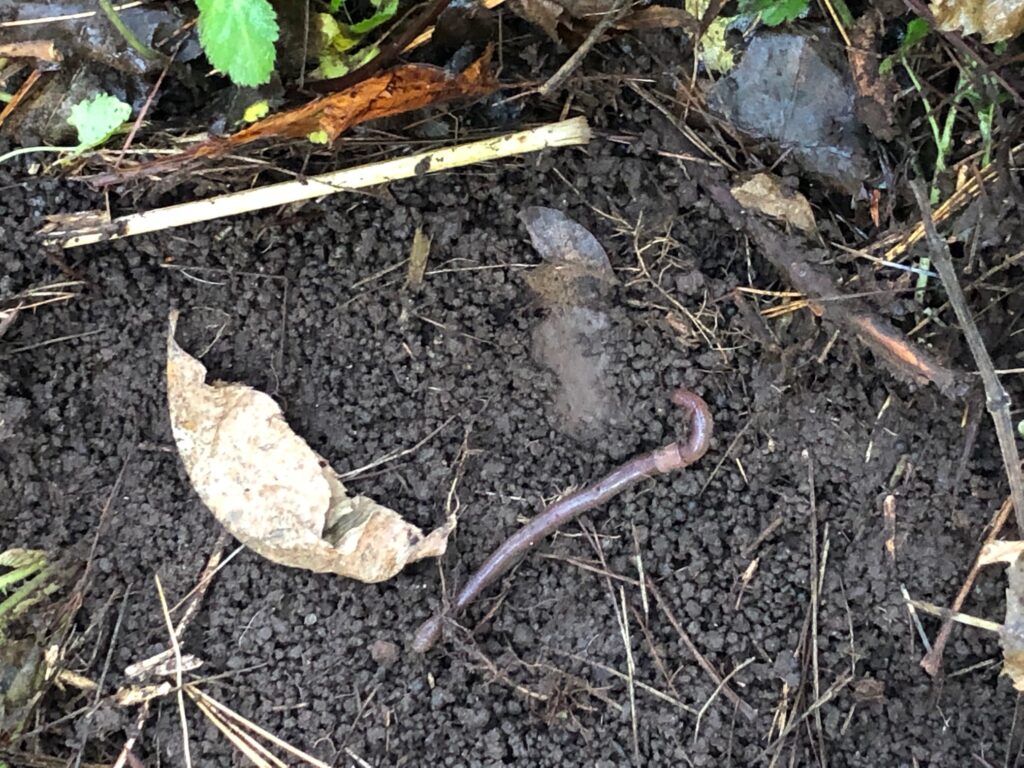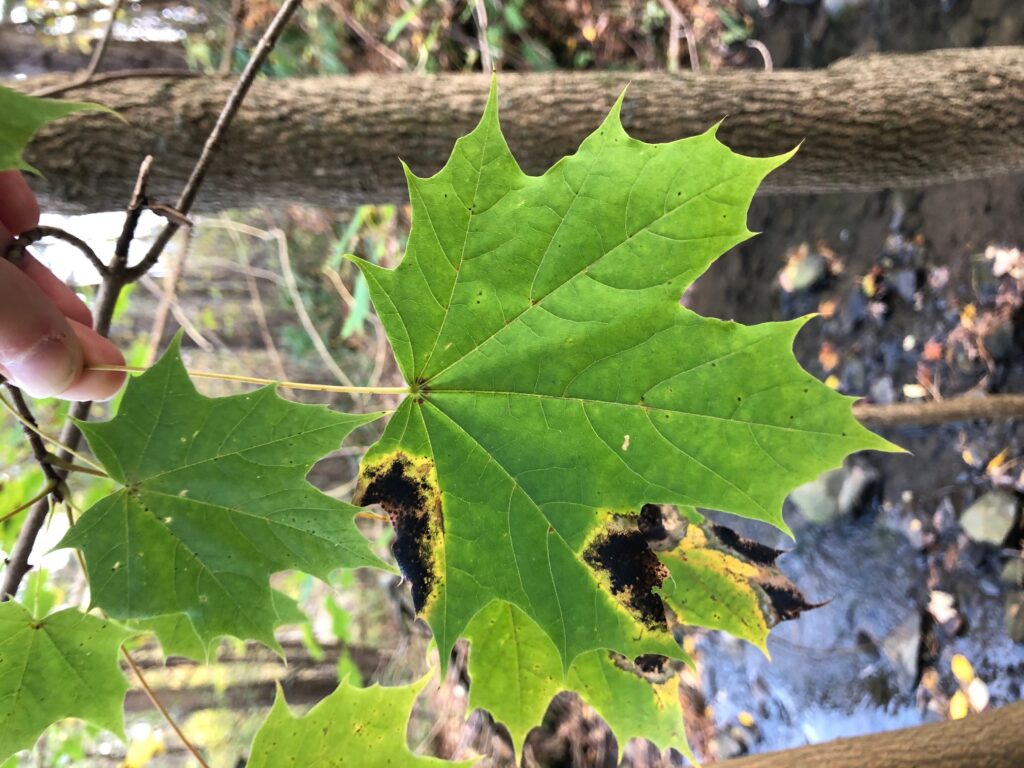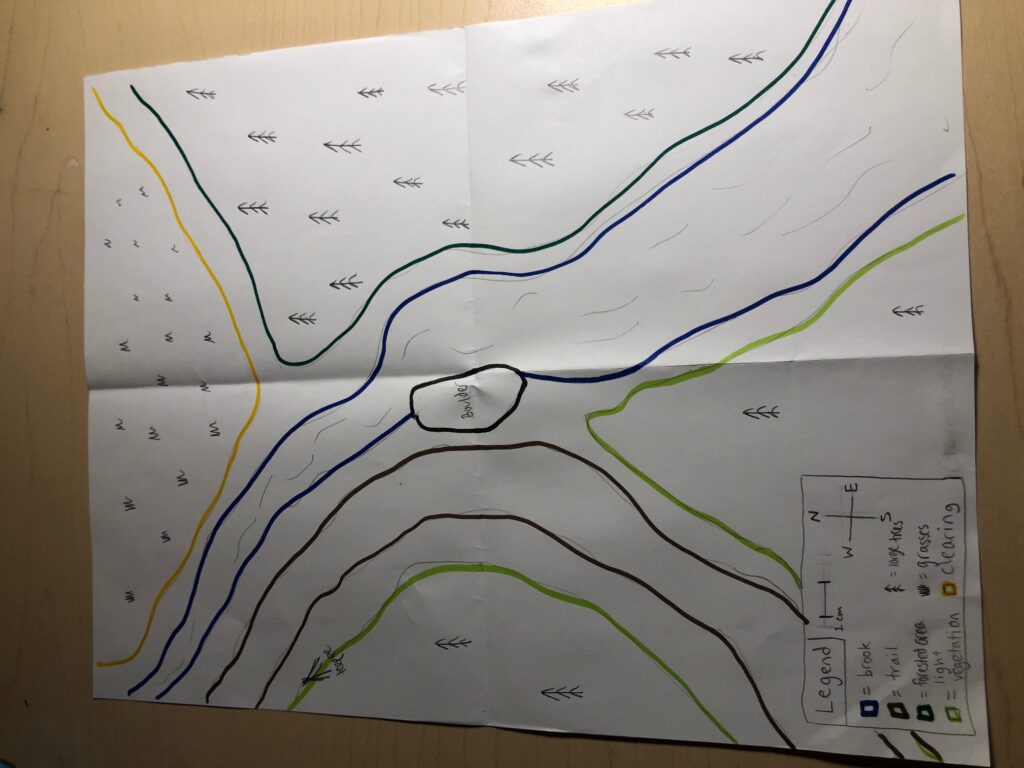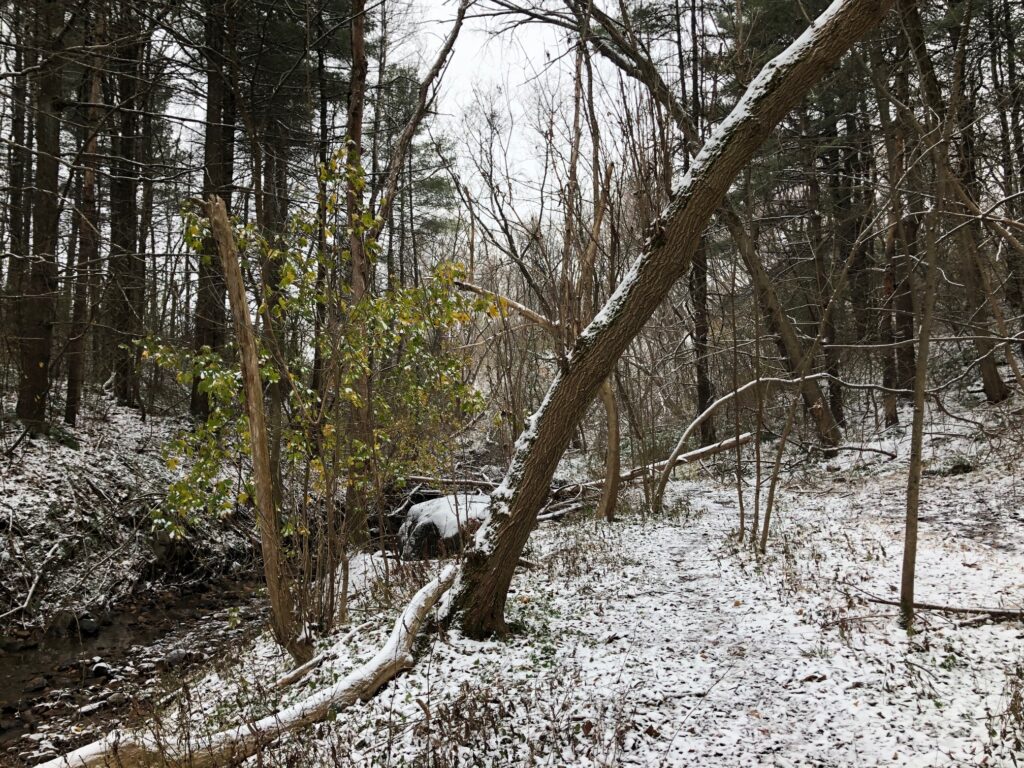
Winter has arrived in Vermont! My spot in Centennial Woods looks drastically different from my previous visits in the fall. I visited during the most recent snowstorm on Monday, November 11th, and I was ecstatic about the start of winter. Early winter is one of my most favorite and magical times of the year and seeing these changes occur in my spot is strengthening my sense of place there. During my last visit, I was quite sad to see most of the greenery gone as most of the leaves had fallen already, leaving the area seemingly barren. However, the blanket of snow covering almost everything in sight on the landscape brings back fond memories of wintertime and its pristine magic. The white pines still have their needles and the Norway maples still have their yellow-ish green spotted leaves, making for a nice contrast of the white and brown landscape. The lack of other deciduous trees made it very easy to spot bird nests, like the one pictured below. In this visit, I could hear birds chirping, something I hadn’t heard in past visits. The chirping combined with the snowfall made for a very pleasing, yet very cold, visit that strengthened my connection and sense of place with my spot in Centennial Woods.
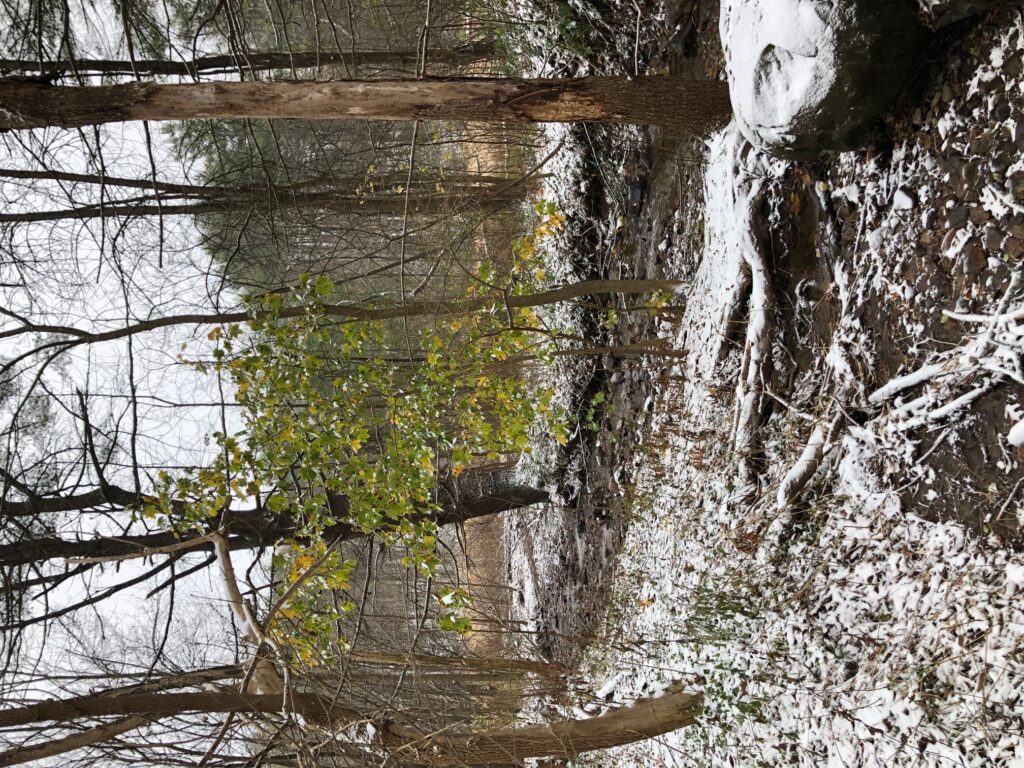
Norway maple standing amonst snowfall 
Bird nest visible in barren trees
With the addition of snowfall, my place reminds me of my hometown of Acton, Massachusetts. Often times in the winter, I would walk my dog through the snowy woods and enjoy my winter surroundings. These woods too were often filled with Eastern white pines and similar brooks and streams, so seeing these similar characteristics in the area I have chosen to visit in Centennial Woods reminds me of the strong sense of place I have back home. This makes my spot feel a little bit like home, which makes me connect with it even more.

Although my spot seems to be remote at first glance, the impact of modern human development is prevalent in many ways. Behind the bright sounds of birds chirping, the low rumblings of nearby traffic and the hum of machinery from nearby businesses like the DoubleTree hotel are ever-present. This makes me think back to a time when perhaps the sound of the birds and the stream and the wind were the only sounds present at my spot. We’d have to go back a long way in history in Vermont, before the interstate, before the University of Vermont, before the timber industry. This place is becoming constrained by human activity, even in the sense of this project. This place is a project for class credit and grades now, even though I do enjoy its natural beauty. Despite all this, I am still very excited to continue to observe its changes throughout the seasons!

